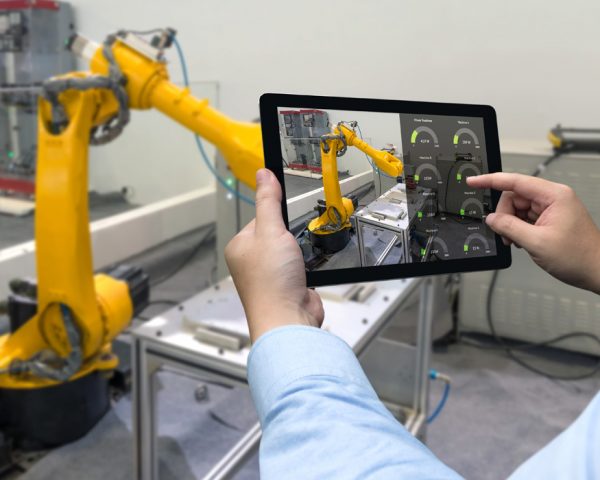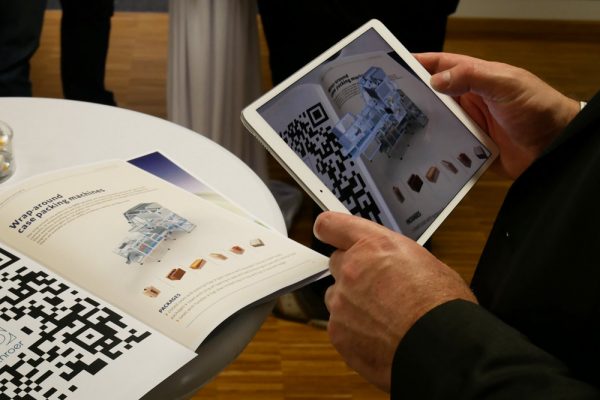Exhibition visitors enthuse with Mixed Reality
Competition at trade fairs can be tough. Exhibitors stand shoulder to shoulder with other big names in their industry
What’s the difference? Virtual vs. Augmented Reality

Virtual Reality (VR)
In the field of virtual reality, users use VR glasses or a headset to immerse themselves in a virtual environment. Thus, VR offers countless applications and possibilities. Completely independent of the exhibition stand, users can walk through virtual showrooms, look behind the scenes of daily operations or interact with products through virtual demonstrations.
Common VR devices include:
- Microsoft Mixed Reality glasses, HTC Vive or Oculus Rift headsets, all use the latest technology to immerse the user in a vibrant and interactive experience.
- VR cardboards or glasses for smartphones are lightweight devices made of cardboard or plastic. This versatile, low-cost system turns a smartphone into a virtual reality headset with VR-friendly mobile applications.
Augmented Reality (AR)
Augmented reality complements a real environment, such as an exhibition stand, a brochure or a product presentation, with interactive digital information. AR typically uses handheld devices, such as smartphones or tablets, to present a view of the real environment overlaid with digital information. For example, 3D models, product data and specifications can all be presented in this way. This allows participants to interactively explore digital information beyond the physical limitations of the real world.
Common AR devices include:
- Smartphones and tablets powered by mobile applications that allow visitors to interact with an exhibit at their own convenience.
- QR codes allow participants to scan labelled items on the exhibition stand to quickly access product, service or company information.
- AR glasses overlay the user’s field of view with digital information based on what the visitor is looking at on the exhibition stand.

Advantages of Mixed Reality at exhibitions
Attract the exhibition visitor
Space expansion
The purpose of exhibitions is to get in touch with visitors in a personal environment. With Mixed Reality, exhibitors can go one step further by creating an experience that transports visitors to a warehouse, sales floor, production facility and beyond. This can be an incredibly powerful tool for exhibitors, especially when the exhibition stand is small. Some ways to do this are:
- Creation of a showroom for an entire product line using Augmented or Virtual Reality.
- Using Virtual Reality to guide visitors through the manufacturing process.
- Provide a virtual journey to the company’s premises and presentation of the team.
- Integration of Augmented Reality with product presentations to provide additional information and selection options.
Fantastic product demonstrations
Use of Mixed Reality to increase leads

Careful experience planning
Visitors are constantly on the move during exhibitions, trying to achieve as much as possible in a limited time. When presenting a Mixed Reality experience to a stand visitor, every minute counts. Therefore, the following points should be given special consideration when designing the concept:
- If the Mixed Reality presentation is short and concise, more visitors have the opportunity to participate in the experience, while the stand personnel have time for questions and sales-oriented discussions.
- The Mixed Reality environment must be simple to operate and user-friendly. Complicated technologies can affect the overall experience.
- Intense Mixed Reality experiences can overwhelm stand visitors. Informative, fun content is better for a pleasant and unforgettable experience.

